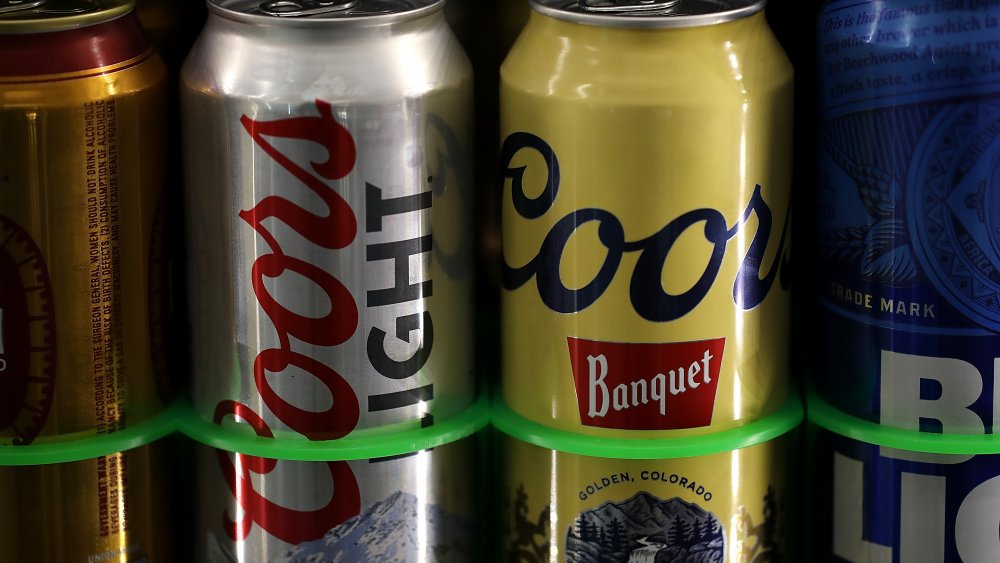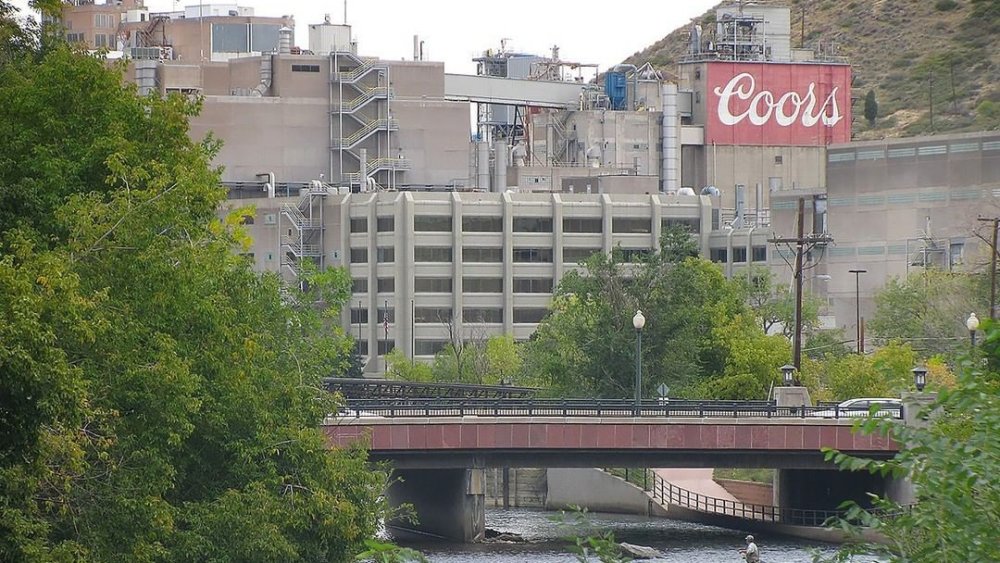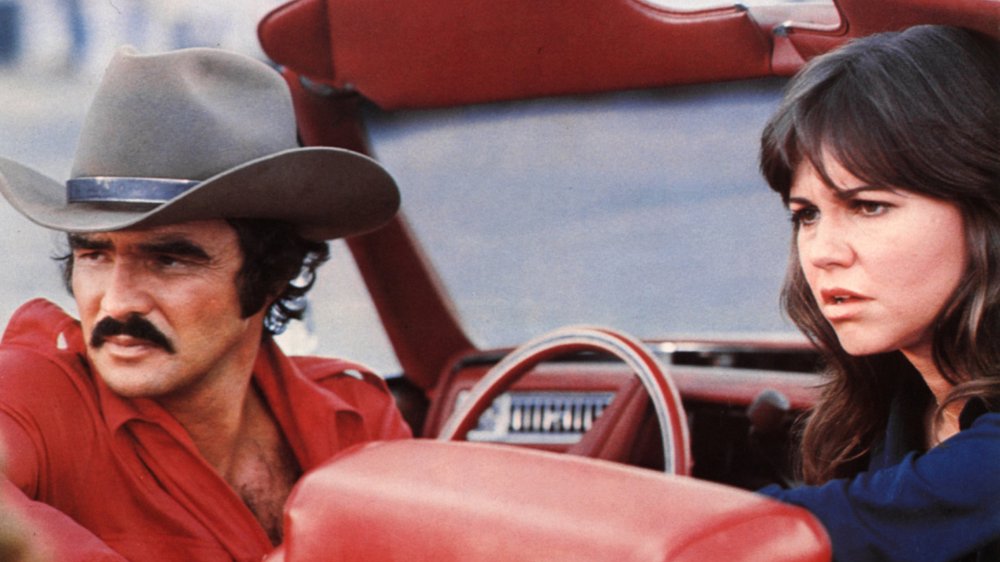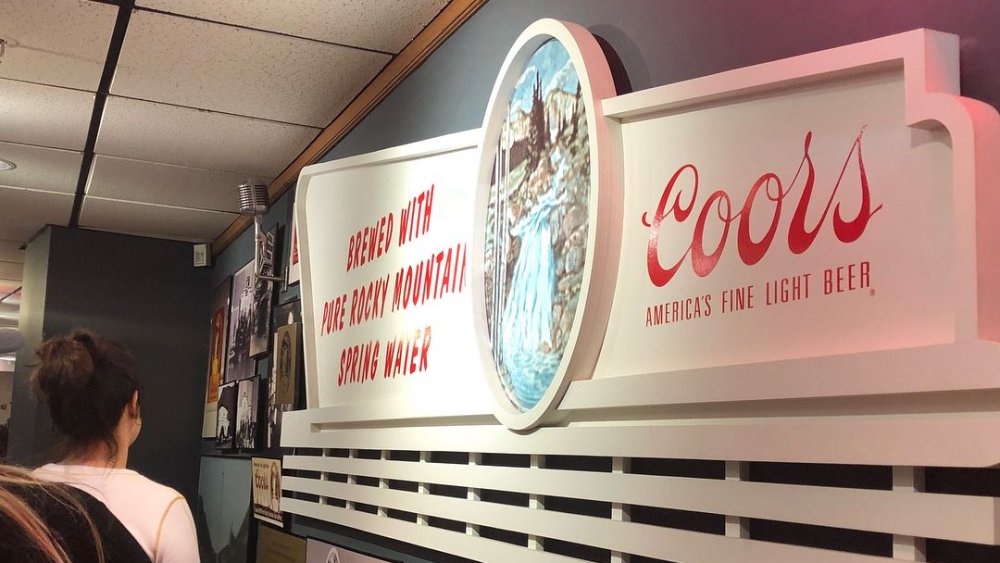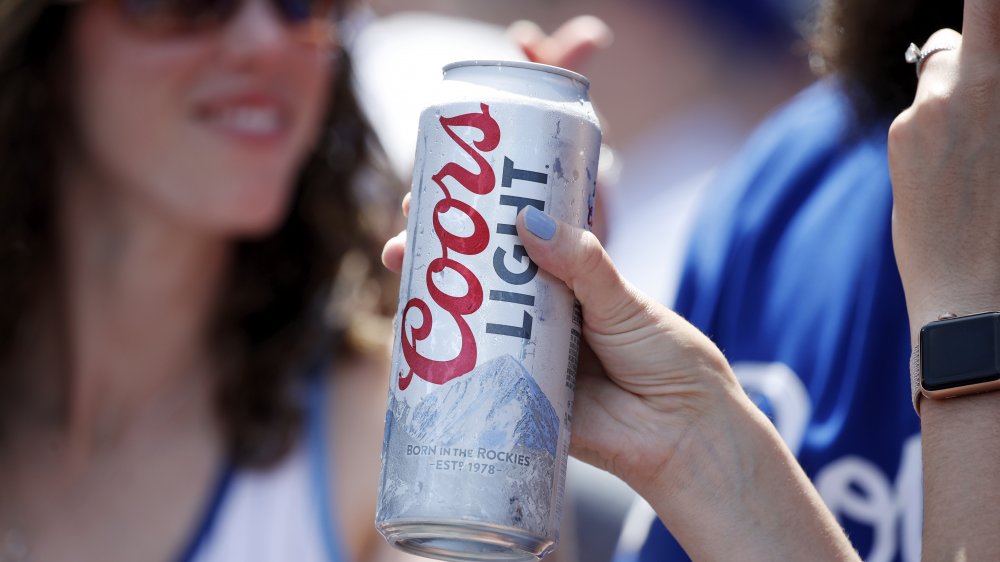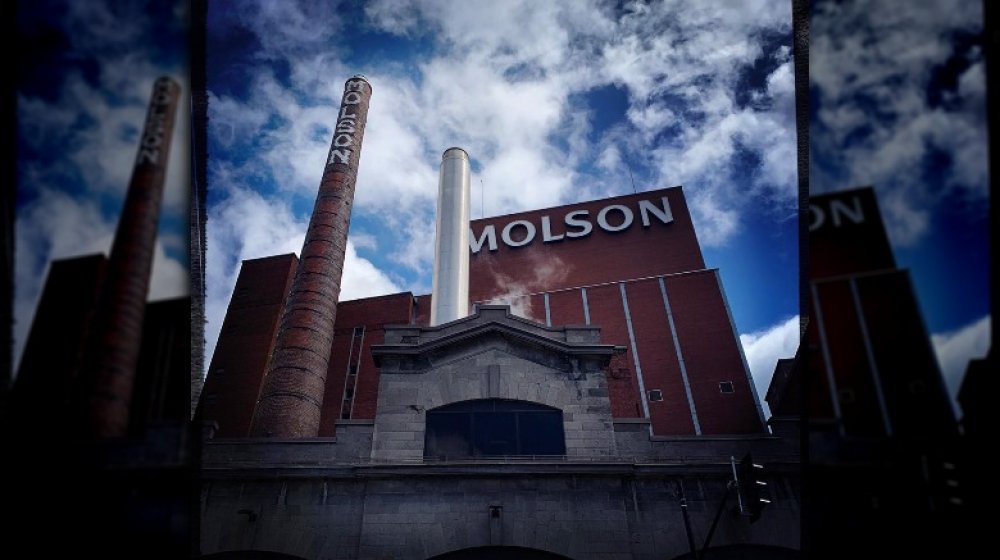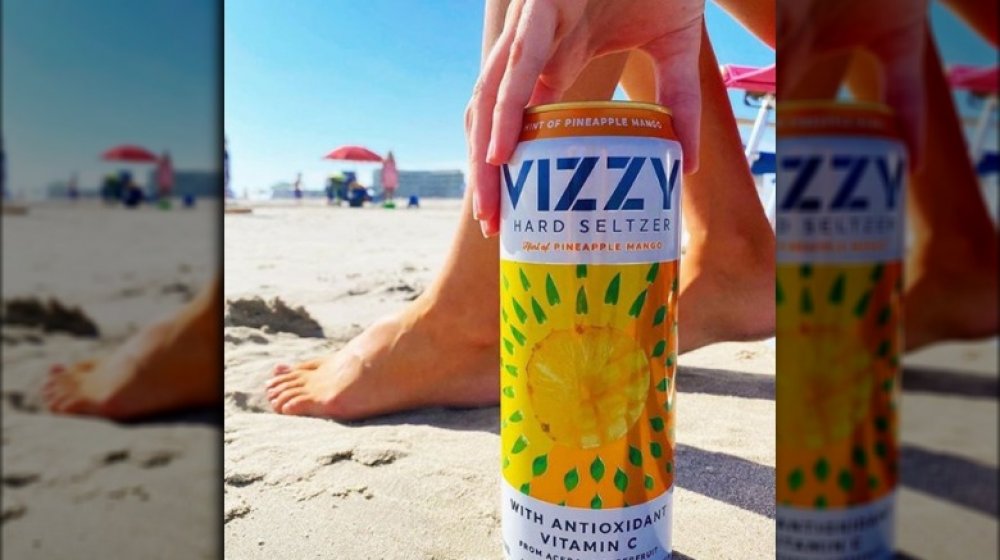The Untold Truth Of Coors Brewing
You can't tell the truth about Coors Brewing without telling the story of the Coors family – a story filled with innovations, controversy, and enormous success and wealth. Less than 150 years after Adolph Coors started a brewery in 1873 in Golden, Colorado, his descendants had become one of the wealthiest families in America, worth $4 billion as of 2015 (via Forbes). Today, after a number of complicated mergers and acquisitions, the company now called Molson Coors Beverage Co. is the fifth-largest beer maker in the world and the second biggest in the United States (via Morningstar).
The story of Coors Brewing starts in 1868 when a 21-year-old novice brewer from Prussia stows away on a ship bound for the U.S. (via Molson Coors). After making his way to Colorado, Adolph Coors started a brewery in 1873 on the bank of Clear Creek outside the town of Golden. He and his business survived a flood and a major economic depression in the late 1800s (via Coastal Virginia). Coors Brewing even survived Prohibition, which started in Colorado four years ahead of the rest of the country (via News & Record). During the dry years, Coors Brewing leaned on a porcelain business it had been running on the side while producing non-alcoholic beverages and malted milk instead of the brew miners had nicknamed "banquet beer" (via Thrillist).
Coors survives a flood, a depression, and Prohibition
Adolph Coors' son, Adolph Jr., ran the company from the middle of Prohibition through the 1940s, expanding Coors' market to other western states outside of Colorado. His three sons took over by the 1950s, although the oldest, Adolph III, was murdered during an apparent botched kidnapping in 1960 (via The Denver Post). The second-oldest, Bill Coors, developed the first aluminum can in 1959, revolutionizing the beverage industry (via Denver Business Journal).
The 1970s were a heyday for Coors Brewing. In the decade from 1965 to 1975, Coors vaulted from the 12th biggest beer in the U.S. to fourth, even though it was only sold in 11 states. Coors was No. 1 in of those states, except for Texas (via The New York Times). Coors did little advertising at the time, so scarcity and word of mouth were all it took to create an aura of mystique around the beer (via The Denver Post). Students at colleges east of the Mississippi River would ask their Colorado friends to fill their trunks with Coors whenever they visited home. Time magazine reported in early 1974 that Vice President Gerald Ford had snuck some Coors back to D.C. in his luggage after a ski trip in Colorado.
'Smokey and the Bandit' adds to the Coors mystique
The Coors mystique probably peaked when the 1977 Burt Reynolds hit, Smokey and the Bandit, came out. The whole premise of that movie was that a southern tycoon would be willing to spend a small fortune to smuggle 400 cases of Coors from Texas into Georgia (via VinePair). But at the Coors brewery in Golden, Colorado, 1977 was remembered more for a bitter strike that ended when workers crossed the picket lines and voted the union out (via The New York Times). This began a decade of boycotts and bad publicity that prompted Coors to revisit its image and rethink its business philosophy.
Coors had been the subject of boycotts dating back to 1966. The early boycotts were organized primarily by people in the Hispanic community who considered Coors' hiring practices racist, disliked its anti-union stance, and were angered by Joseph Coors' opposition to a Chicano Studies program when he was regent at the University of Colorado (via Colorado Public Radio).
Boycotts take a bite out of Coors' business
The boycotts gained force when the AFL-CIO got involved, after the union-busting strike of 1977. Members of the Black and LGBTQ+ communities joined in. Coors gave lie-detector tests to prospective employees from the 1960s until 1986, trying to root out communists, drug abusers, and gay people from its applicant pools. When Coors bowed to political pressure and discontinued the polygraphs, a Coors executive vowed to continue keeping political radicals out of the brewery (via Los Angeles Times). The Black community was motivated to join the boycott after Bill Coors told minority business owners in Denver in 1984 that Africans lacked the "intellectual capacity to succeed" and topped that off by asserting that Black people in the U.S. should be thankful slave traders dragged their ancestors to America in chains because now they have opportunities that wouldn't be available to them in Africa (via The Washington Post).
Five hundred liquor stores in southern California joined the boycott after the slave trader speech (via The New York Times), and Coors' market share in California slipped from 40 percent in 1977 to just 14 percent in 1984 (via Colorado Public Radio). The Times reported that the AFL-CIO dropped the boycott in 1987 after a new generation of the Coors family opened the door to union representation at the Golden plant. (Employees rejected the union in a 1988 vote.) Coors also pledged $625 million to Black and Hispanic groups in an effort to mend fences.
Coors Light becomes the brewery's biggest beer
Coors began its march eastward in 1981 (via Denver Business Journal). After entering the Indiana market in 1991, Coors was finally available in all 50 states (via Thrillist). Industry experts say Coors needed to expand because of the aggressive marketing tactics on Coors' home turf by the big boys of beer, Anheuser-Busch and Miller (via The Denver Post). Westword speculated that Coors expanded to make up for the loss of market share due to the 1977 boycott.
Coors also got on the light beer bandwagon. Five years after Miller Lite pioneered the niche product, Coors Light came out in 1978, in a silver can which set it apart from Coors' banquet-beer yellow. By the 1980s, college students were ordering Coors Light at bars by asking for the "Silver Bullet," and the nickname stuck (via VinePair).
Thirty years later, and Coors' original banquet beer commanded only 0.5 percent of the U.S. beer market, while Coors Light had grown to take an 8 percent share (Via The Denver Post). Coors Light became the No. 2 bestselling beer in the U.S. in 2011, passing Budweiser (via CSP). Coors Light was still No. 2 in 2019, behind only Bud Light, but its market share was slipping. It was at 6.8 percent last year (via USA Today). Americans' taste for alcohol is changing, and Coors – which isn't really Coors anymore – needed to change with it.
Coors joins forces with Molson and Miller
Coors Brewing became Molson Coors in 2005, after a $3.4 billion merger of the Canada- and Colorado-based breweries (via The New York Times). Three years later, Molson Coors and SABMiller agreed to combine their U.S. efforts in a joint venture called MillerCoors that would be the No. 2 beer producer in the U.S., behind only Anheuser-Busch. Peter Coors, Molson Coors' vice chairman at the time, said the union of the two rival breweries was a cost-saving move at a time when beer was losing customers to wine, liquor, and high-end beers (via The New York Times).
In 2012, Molson Coors entered Europe in a big way by purchasing StarBev. The company sold its various brands in nine countries in central and eastern Europe, plus its flagship beer Staropramen, which was sold in more than 30 countries.
Finally, in 2016, Anheuser-Busch acquired SABMiller in a union of the No. 1 and No. 2 beermakers in the U.S. But federal regulators would only approve if the new brewery giant sold off Miller's 58 percent stake in MillerCoors. Molson Coors had first dibs, and they took it (via The Denver Post). The $12 billion deal brought all of Miller's brands into the Molson Coors fold, including the onetime-foreign labels Pilsner Urquell and Foster's Lager.
Coors jumps on the hard-seltzer bandwagon
Nine of the 25 bestselling beers in the U.S. in 2019 were Molson Coors labels, including Coors Light at No. 2, and Miller Lite in third (via USA Today). The list also includes Blue Moon at No. 19. Blue Moon, a Belgian-style wheat beer, was concocted at a separate mini-brewery inside Coors Field, the home of the Colorado Rockies baseball team (via Westword).
The big U.S. breweries have been losing market share in recent years to Mexican imports and craft brews (via The Los Angeles Times). Just in the past year or two, big beer has been losing customers to hard seltzers (via BeverageDaily). Everyone, it seems, is coming out with a seltzer to grab a piece of that lucrative market. Molson Coors introduced Vizzy earlier in 2020 and Coors Seltzer in October (via CNN). Vizzy sales have been strong so far, and Molson Coors hopes Coors Seltzer will stand out in an increasingly crowded hard-bubbly-water market. The company announced in September it would offer new nonalcoholic beverages for a younger, more health-conscious consumer through its relationship with L.A. Libations (via Convenience Store News).
For now, Molson Coors is banking a good bit of its future on hard seltzers. According to a financial analyst's notes in Morningstar, the company hopes to grow its 4-percent share in the seltzer market to 10 percent by the end of 2021. By that time, Topo Chico Hard Seltzer will be in the fold.
